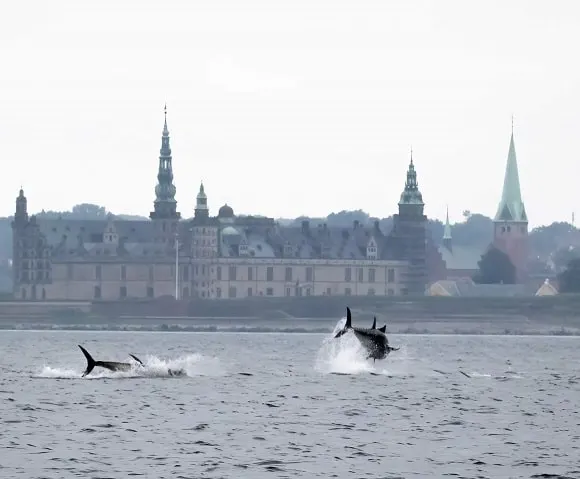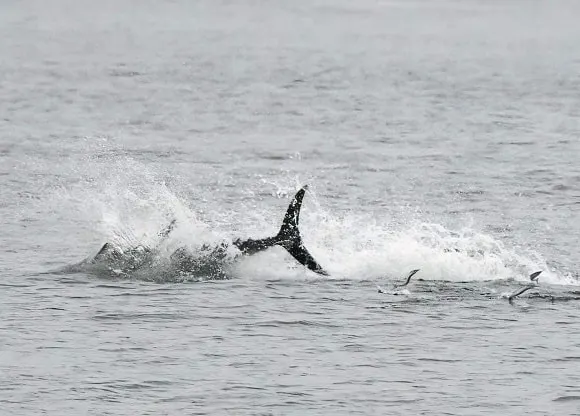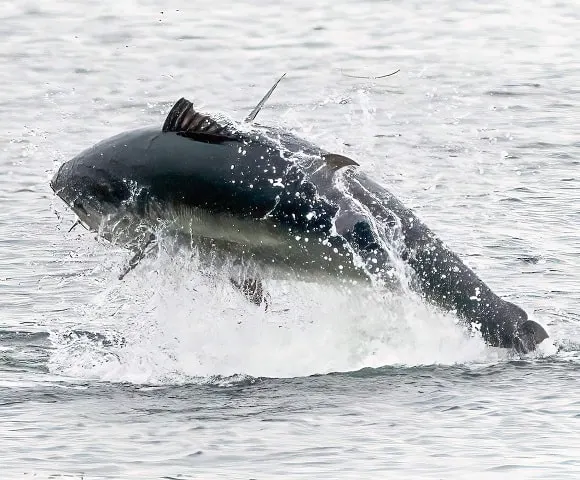In the serene waters of Denmark, a new and exhilarating adventure has surfaced, captivating the hearts of locals and tourists alike – bluefin tuna safaris.
This unexpected trend has bolstered the local Danish tourism industry, blending the thrill of watching these ocean giants with the breathtaking beauty of the Northeast Atlantic Ocean.
The Rise of Tuna Safaris
After the grand return of the Northeast Atlantic bluefin tuna and years of research-based tagging projects, tuna safaris have become the latest sensation in Denmark, offering an unparalleled experience of observing giant bluefin tuna, one of our ocean’s most majestic and powerful creatures.
Starting out as a niche activity, these tuna safaris have quickly transcended expectations, attracting a diverse crowd of adventurers, families, and marine life enthusiasts.
The Allure of the Ocean’s Giants

The Atlantic bluefin tuna, with its impressive size and mesmerizing speed, has always been a creature of fascination.
Weighing up to 680 kilograms and reaching lengths of up to 3 meters, witnessing these giants in their natural habitat has become a sought-after experience.
Tuna safaris provide an opportunity to delve into their world, allowing the spectators to observe and understand their hunting and feeding behaviors, migratory patterns, and the ecosystems they inhabit.
RELATED READING: The Return of the Mighty Northeast Atlantic Bluefin Tuna
Boost to Local Tourism
Local communities have embraced the tuna safari trend, witnessing a revitalization of their economies.
Accommodation providers, restaurants, and other service-oriented businesses are experiencing a welcome boost as adventurers and nature lovers flock to the coastal regions of Denmark.
An Eco-Friendly Adventure?

The surge in popularity of these safaris has brought along a responsibility to ensure that these activities are conducted sustainably and ethically.
Operators and guides emphasize eco-friendly practices, trying to ensure that the tuna populations and their habitats are not disrupted.
Unfortunately, there are also negative sides to this tourism activity!
Understanding the Impact
Research has underscored the physiological responses of Atlantic bluefin tuna to stress.
A study published on ResearchGate highlights the notable changes in the physiology and meat color of the tuna in response to stress during close encounters with boats, which can have implications for their overall health and well-being.
Another study from the Canadian Journal of Fisheries and Aquatic Sciences delves into the stress responses of bluefin tuna during recreational catch and release, revealing that the activities can induce physiological stress in these marine giants.
The Need for Ethical Practices
Given the potential stressors and threats to these recovering tuna populations, it becomes imperative to approach tuna safaris with a lens of sustainable eco-tourism.
This involves ensuring that the activities are conducted to minimize disturbance to the tuna, protect their habitats, and promote their conservation.
Key Considerations for Sustainable Tuna Safaris
- Minimizing Disturbance: Employing guidelines that limit the proximity of safari vessels to the tuna, ensuring that their natural behaviors and migratory patterns are not disrupted.
- Educational Component: Incorporating educational programs into the safaris to raise awareness among participants about the importance of tuna conservation and the impact of human activities on their populations.
- Supporting Conservation: Allocating a portion of the proceeds from Tuna Safaris towards conservation efforts to protect and preserve tuna populations and their habitats.
- Regulations and Guidelines: Implementing and adhering to regulations that govern the conduct of tuna safaris, ensuring that they are aligned with conservation goals and do not jeopardize the well-being of the fish.
- Promoting Respect for Wildlife: Cultivating a culture of respect and admiration for the tuna among participants, emphasizing the importance of observing without interfering.
A Multifaceted Experience

Tuna safaris in Denmark offer more than just an encounter with these incredible creatures.
They provide a holistic experience that encompasses the stunning Danish seascapes, rich marine biodiversity, and the warm hospitality of the coastal communities.
Participants often find themselves immersed in the tranquil sea voyages, the exhilarating moments of spotting tuna, and the camaraderie developed aboard the safari vessels.
The unexpected rise of tuna safaris in Denmark is a testament to the ever-evolving nature of travel and adventure.
It reflects the human spirit’s quest for unique, awe-inspiring experiences and the ability to find wonder in the unlikeliest places.
As the sun sets over the Danish waters, casting a golden hue over the vast ocean, the tuna continue their age-old migratory journey, oblivious to the joy and fascination they bring to those who seek them.
If people can combine that fascination and joy with honest conservation efforts and deep respect for the fish they come to observe, then, and only then, can this new trend be called a sustainable eco-tourism adventure.
I sincerely hope that both the local safari guides, research teams, and visiting tourists will agree with me on that point!
Related Articles
- Are There Bluefin Tuna in the North Sea?
- Are Giant Bluefin Tuna Endangered?
- Are Global Fish Stocks Recovering?
All images courtesy of Bettina Pedersen


Leave a comment